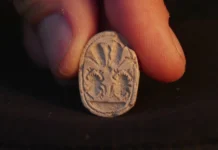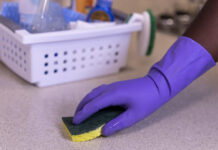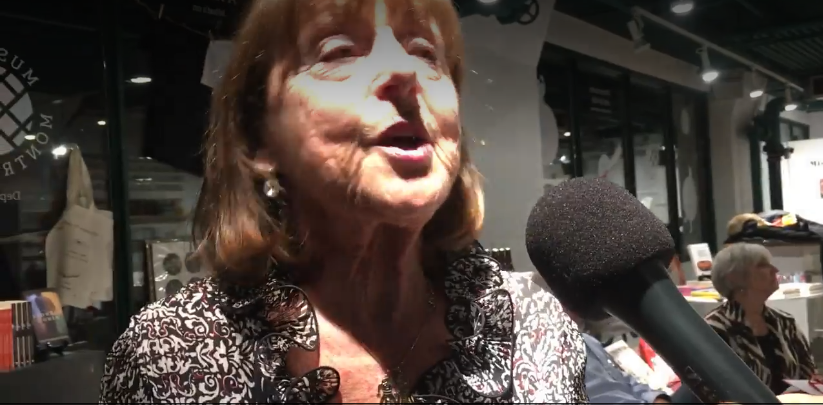After singing a Yiddish lullaby familiar to generations of Jewish children, Sheila Witt looked out onto the Main and reminded her students that there is no better place in Montreal to learn the language.
“Out there in those streets, this is where it all happened — this is where Yiddish was spoken, this is where the signs were in Yiddish,” Witt said during her class at the Museum of Jewish Montreal on St-Laurent Blvd. and Duluth Ave., once the heart of the city’s Jewish quarter.
“I used to run up that street to see my bubby, and down that street was a school.”
After teaching Yiddish to Jewish students in Montreal for 39 years, Witt finally retired last year from Jewish People’s and Peretz Schools.
But her love of the language runs so deep, the 77-year-old teacher can’t stay out of the classroom.
In the fall, Witt returned to her old neighbourhood once a week to teach her mother tongue to a new generation of Yiddish aficionados.
Some of her students are the children or grandchildren of Holocaust survivors who continued to speak Yiddish after settling in Montreal following the Second World War.
Others have no ties to the Jewish community, but love the musicality of the language and are keen to learn about the culture and traditions associated with it.
Jean-Luc Laporte said he began learning German in 2006 and became interested in Yiddish when he discovered it on the internet.
“With the language, there’s a culture linked to life in Europe before the war,” he said. “There is a certain nostalgia about the language that is still alive today.”
Yiddish, which is also spoken by Hasidic Jews in Montreal, was the common language spoken by European Jews who immigrated to Canada before and after the Second World War.
During her 90-minute class on a Monday night in December, Witt taught her students the Yiddish words for winter clothing, ran through some basic grammar, discussed the origin of some Jewish surnames and ended the evening singing Yiddish songs.
After the 10-week course, several students can read and speak rudimentary Yiddish.
One student is a convert to Judaism who is doing a master’s in history at Concordia University. Another is the daughter of Holocaust survivors who wants to get in touch with her roots.
Two Germans enrolled in the class and other students are residents of the Plateau-Mont-Royal borough who are intrigued by the neighbourhood’s Yiddish history.
“I love seeing them eat it up,” Witt said.
Her face lights up when she talks about Yiddish, a language she learned from her parents, grandmother and other Ashkenazi Jews who settled around the Main after arriving from Eastern Europe in the 1920s and 1930s.
“Yiddish is more than just a language — it’s a culture, it’s tradition,” she said.
“You use your hands and face when you talk Yiddish and it makes you happy. It brought more than just a language. It brought me family and (gave) me my heritage. As I grew older and matured, I got to love it even more.”
Although the number of Yiddish speakers is declining across North America as Holocaust survivors pass away, Witt said she has noticed a renewed interest in the language in Montreal.
“For years, I thought we were getting lost in the shuffle,” she said. “But I have seen an upward swing. There are a lot more opportunities to study Yiddish if you want. There’s a lot of Yiddish online. (My) classes are almost bursting.”
Witt has taught so many children over the years that she rarely goes to a function in the Jewish community without being recognized. “Everyone knows me because I either taught them or their children,” said Witt, who is still greeted as Lererin Sheila by her former pupils.
“I am most proud of having taught so many children and have been able to, hopefully, pass on my love and my passion to them,” she said. “I feel so blessed that I was able to do something I loved.”
Over the years, Witt has received numerous awards for her dedication to Yiddish and her contribution to Montreal’s Jewish community.
In the 1990s, she began teaching conversational Yiddish to staff at the Maimonides Geriatric Centre so they could converse with their elderly Jewish patients. Many patients suffering from memory loss would spring to life when they heard a Yiddish word or phrase, she recalled.
In recent years, Witt has taken her young students to a seniors home on Cavendish Blvd. to visit elderly Yiddish speakers and Holocaust survivors.
“When they heard the Yiddish songs, they would cry,” Witt recalled. “You had to see the joy when they were singing with the kids. It brought back their youth. It brought back their families.”


























